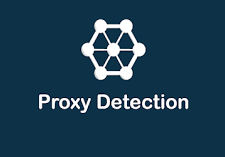Mastering the Green Card Interview: Step-by-Step Preparation
Obtaining a green card in the United States is a significant milestone, and the green card interview is a crucial part of the process. Proper preparation can make the difference between a successful interview and potential setbacks. Here’s a step-by-step guide to help you master the green card interview and increase your chances of success:
Step 1: Understand the Purpose and Process
Educate yourself about the purpose of the green card marriage questions. It’s an opportunity for U.S. Citizenship and Immigration Services (USCIS) officers to verify the information in your application and assess your eligibility for permanent residency. Understand the interview’s structure, typical questions, and what is expected of you.

Step 2: Organize Your Documentation
Gather all required documents well in advance. These may include:
- Passport and other identification
- Appointment notice
- Form I-485 (Application to Register Permanent Residence or Adjust Status)
- Form I-864 (Affidavit of Support)
- Evidence of financial stability (tax returns, pay stubs, etc.)
- Evidence of relationship (if applicable, such as marriage certificate, photos, joint accounts)
- Any other supporting documents relevant to your case
Step 3: Review Your Application
Thoroughly review your green card application and all submitted materials. Be prepared to explain any discrepancies or changes. Consistency and accuracy are crucial to avoid raising suspicions.
Step 4: Practice Your Interview Skills
Practice answering common interview questions with a friend or family member. Focus on clear and concise communication. If English is not your first language, practice with an interpreter if necessary.
Step 5: Research U.S. History and Civics (if applicable)
For marriage-based green card interviews, you may be asked basic questions about U.S. history and civics. Brush up on these topics, but don’t stress over memorization.
Step 6: Dress Professionally
Choose appropriate attire for the interview. Dressing professionally shows respect for the process and demonstrates your seriousness about becoming a permanent resident.
Step 7: Be Transparent and Honest
Honesty is paramount. If you have a criminal history or other potential concerns, address them openly. Attempting to hide information can lead to serious consequences.
Step 8: Prepare for Relationship-based Questions (if applicable)
If applying through marriage, be ready to discuss your relationship. Officers may ask how you met, details about your spouse, and your future plans together. Be genuine and share your story confidently.
Step 9: Stay Calm and Composed
Nervousness is natural, but practice relaxation techniques to stay calm during the interview. Take deep breaths, maintain eye contact, and answer questions thoughtfully.
Step 10: Ask Questions
The interview is also your chance to ask questions. If you have concerns or need clarification, don’t hesitate to ask the USCIS officer.
Step 11: Follow Up as Needed
After the interview, follow any instructions provided by the officer. If additional documentation is requested, provide it promptly. Maintain open lines of communication.
Step 12: Stay Informed
Stay up-to-date with any changes in immigration policies and procedures. Being informed ensures you’re well-prepared for the interview.
Step 13: Maintain Positivity
Approach the interview with a positive attitude. Believe in your preparation and the validity of your application.
Mastering the green card interview requires thorough preparation, honesty, and a positive demeanor. By following these steps and understanding the process, you can navigate the interview with confidence and increase your chances of a successful outcome on your journey to permanent residency in the United States.










